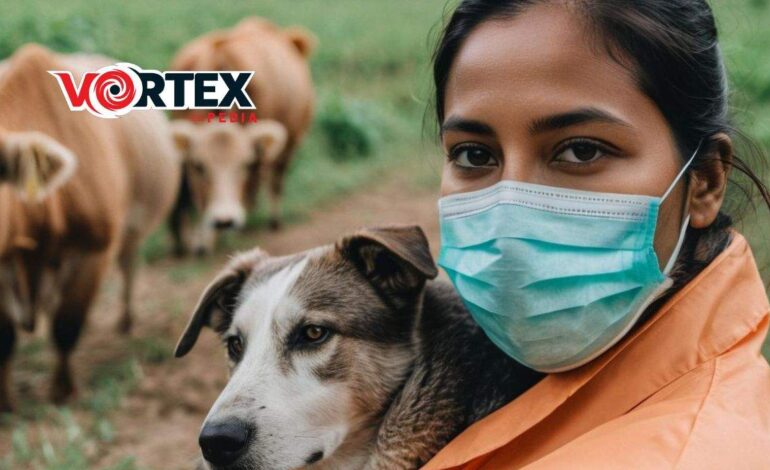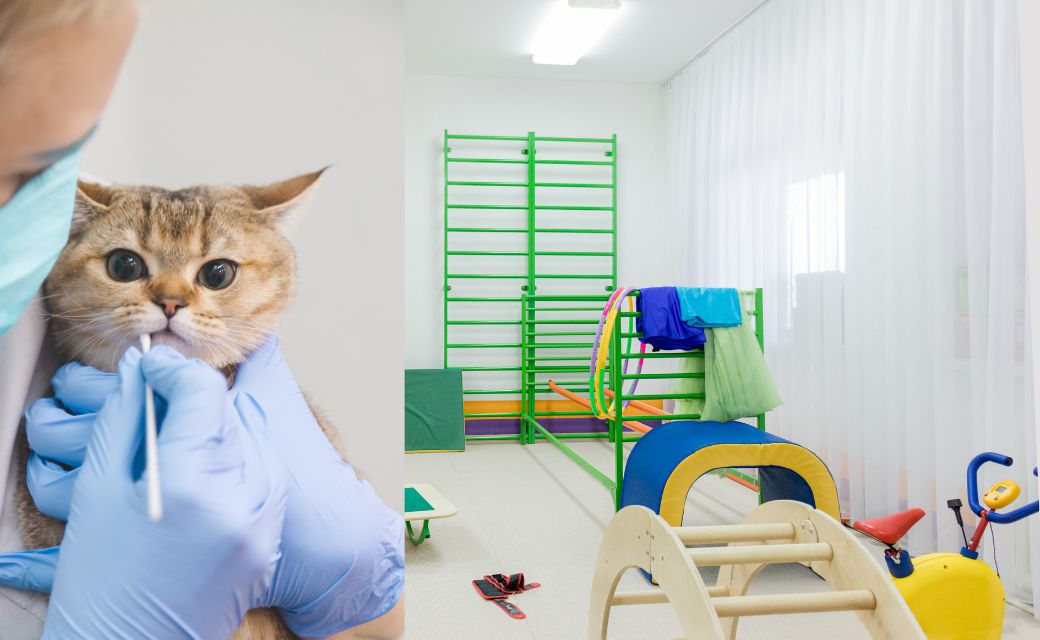
The Risk of Zoonotic Diseases Causing the Next Pandemic
In May of 1993, a group of deer mice living in drought-stricken Four Corners, USA, woke up to an unexpected rainfall. The deer mice were delighted because this rainfall allowed their species to thrive and expand rapidly. However, their success caused the spread of zoonotic disease (Cleveland Clinic) in humans called hantavirus. Lucky for us humans, the reason for the outbreak was identified and contained in a matter of months.
Increasing Threat of Zoonotic Diseases
We might not always be this lucky in containing a zoonotic disease outbreak. In just the last 30 years, the world has witnessed a rapid increase in zoonotic disease spillovers, and today there are over 200 of them. Trying to contain and fight every zoonotic disease individually would be virtually impossible.
The Rising Tide of Spillovers
Many scientists are predicting a continued increase in global zoonotic disease spillovers over the coming years. Now is a good time to answer two important questions: Why has there been an explosion of zoonotic disease in recent years, and is there any way we can reduce the number of zoonotic disease spillovers? To answer both these questions, we need to know how zoonotic spillover occurs.
Understanding Zoonotic Spillover
Zoonotic diseases are infectious diseases transmitted from animals to humans through pathogens. This transfer of zoonotic pathogens, also known as zoonotic spillover, can happen through direct contact with infected animals or indirectly through vectors like ticks, mosquitoes, or sand flies. While zoonotic diseases occur naturally, the recent increase in zoonotic disease spillover is not entirely normal.
Human Expansion and Zoonotic Diseases
They are a result of rapid human expansion and the resulting increased contact between humans and animals. One human activity in particular has been at the center of this: the meat industry. A 2020 report shows that 44 out of 60 of the world’s largest meat, fish, and dairy companies are considered high risk for zoonotic spillover events, and none of the 60 companies present a low risk.
The Role of the Meat Industry
So why is the meat industry linked to a higher risk of zoonotic spillover events? In the last 50 years, the global demand for meat has quadrupled. To meet this demand, the meat industry created large-scale factory farms to maximize output and minimize costs. Today, more than 70 billion animals are farmed for food each year in factory farms. These factory farms have up to tens of thousands of animals crowded together indoors with poor ventilation and a lack of adequate sunlight. This creates a suitable environment for viruses and bacteria to develop and spread among these animals. Since farmers work near these animals, the pathogen can easily jump from the farm animals to humans. An example of such a zoonotic disease is swine flu, a human respiratory infection caused by a virus that started in pigs.
Swine Flu and Factory Farms
A 2020 field study of 2,500 pig farms in Europe discovered that 50% of these farms were a breeding ground for swine flu viruses. Besides factory farming, the meat industry is also driving large-scale deforestation, which in turn is increasing the risk of zoonotic disease spillover. The meat industry is responsible for 36% of global deforestation, with beef production being the leading factor, followed by soy production, 80% of which is ironically used as food for livestock.
Deforestation and Spillover Events
Such large-scale deforestation causes a further increase in zoonotic spillover events via two changes. First, the forest-turned-farmland becomes the home for human populations. Second, the wild animals who lived in these forests are now forced to migrate out of their habitat and live closer to humans. Both these changes put humans and wild animals in closer proximity, and since many wild animals carry pathogens that can jump to humans, the chance for zoonotic spillover increases.
Case Study: Nipah Virus
An example of this is the first known emergence of the Nipah virus in people living in Peninsular Malaysia in 1997. Parts of the Indonesian rainforests were cleared to make room for agriculture. This meant that the fruit bats that used to live in these forests had to fly elsewhere in search of food, carrying with them the Nipah virus. In their quest to find food, they found a Malaysian orchard located near a pig farm. Not long after, the pigs started to fall sick because the virus had jumped from the bats to the pigs. Then, the virus jumped from pigs to humans, and by 1999, 275 people had developed severe brain inflammation, and 105 had died.
The Biodiversity Connection
In addition to forcing wild animals and their pathogens to migrate closer to humans, deforestation has another side effect: it leads to loss in biodiversity. Studies have found a link between the loss of biodiversity and an increased risk of zoonotic disease emergence, known as the dilution effect. While the science around the dilution effect is complex and still evolving, one thing is known with certainty: the lower the biodiversity, the higher the chance of zoonotic disease spillover.
Indirect Factors Exacerbating Zoonotic Diseases
So far, we have learned that factory farms, deforestation, and loss of biodiversity have directly caused an explosion in zoonotic disease spillover events in recent years. However, there are crucial indirect factors that exacerbate the problem: urbanization, globalization, and climate change. A WHO report highlighted that two-thirds of the world’s population is expected to live in urban areas by 2030. To make room for this, rapid urbanization is destroying natural habitats via deforestation, placing humans and wild animals closer to each other and further increasing the risk of zoonotic spillover.
Urbanization, Globalization, and Climate Change
Adding to this risk is globalization. While globalization has improved the living standards for many people, it also means that more people can now afford meat for their diet. This has been one of the reasons why global meat demand has quadrupled in the last 50 years, which ultimately increases the chance of spillover events. Rapid urbanization and globalization are not only increasing the risk of zoonotic spillover events; they are also fueling climate change. Climate change, in turn, is creating ideal conditions for zoonotic diseases to emerge and spread.
Climate Change and Zoonotic Diseases
For example, in Italy, increased heat waves provided the perfect warm climate for tiger mosquitoes to multiply rapidly, which is hypothesized to have led to the 2007 chikungunya outbreak. Global warming from climate change is also causing permafrost thaw. Permafrost can have pathogens buried within it, and therefore, the melting of permafrost could result in the re-emergence of ancient microbes and viruses. In 2016, Russia reported the death of one person and over 2,000 reindeer from a zoonotic disease known as anthrax. Experts believe permafrost thaw may have brought long-buried infected carcasses to the surface, which then came in contact with reindeer who spread the disease to humans.
Solutions to Reduce Zoonotic Spillovers
Now that we know human-induced climate change, urbanization, globalization, factory farms, and deforestation are the major reasons why there has been a rapid increase in zoonotic spillover events, what can we do to decrease the risk of future zoonotic spillover events?
Sustainable Food Systems
First, support sustainable food systems that stop habitat destruction by reducing meat consumption, maintaining strict hygiene conditions during meat production, using sustainable agriculture to produce more food utilizing less land, and finding farm meat alternatives such as lab-grown meat.
Mitigating Climate Change
Second, mitigate climate change by reducing greenhouse gas emissions, conserving natural habitats, and making cities greener and more resource-efficient.
Investing in Research and Development
Third, invest in research and development to understand zoonotic diseases and spillover events better, so that we can strengthen our healthcare system, create emergency funds, and be prepared to respond to future outbreaks quickly and effectively.
Conclusion
So that’s the good news. With humans being responsible for the rapid increase in zoonotic spillover events in recent years, humans are also the solution. But we have to act now.








